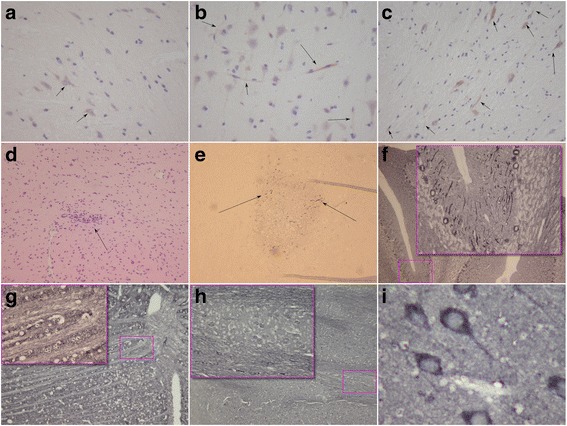Fig. 1.

Brain lesions seen in rat sepsis model. a Central brain white matter immunohistochemistry in sham-treated animals (controls) shows characteristic neuronal soma with restricted staining for β-amyloid precursor protein (βAPP) (arrows). b In septic animals, brain tissue from the same locations showed abnormal and more widespread axonal staining extending from the axonal hillock to the proximal axon (arrows). c Abnormal axonal βAPP staining follows white matter tracts (arrows). d There are also pockets of inflammatory and ischemic brain lesions seen in the rat sepsis model (H&E stain; arrow). e Staining of such lesions shows intense neuronal and axonal staining for βAPP (arrows). f Staining of lesions of sham-treated animals for β-tubulin in the magnification field is crisp and shows integrity of the neuroaxonal compartment (overview, inset; original magnification × 10). g Likewise, the integrity of white matter tracts in sham-treated animals can be seen (×10; inset, original magnification × 40). h There is severe structural disorganization of the β-tubulin network in white matter tracts of the septic animals. i The level of structural β-tubulin disorganization in the septic rat brain is best observed at greater magnification (original magnification × 40) of the neuroaxonal compartment from the same location as that taken from the sham model shown in (f)
